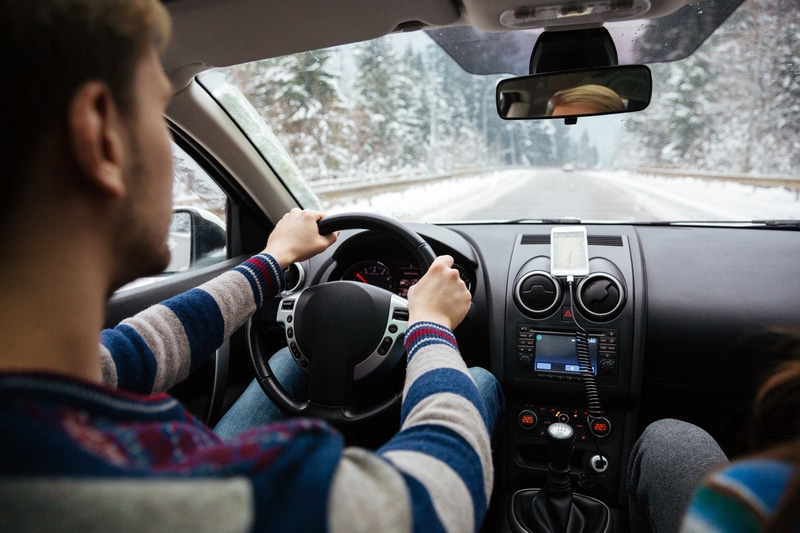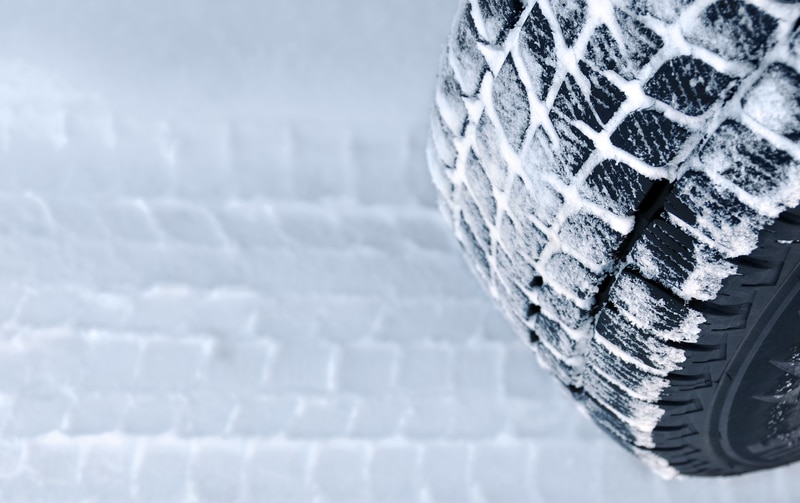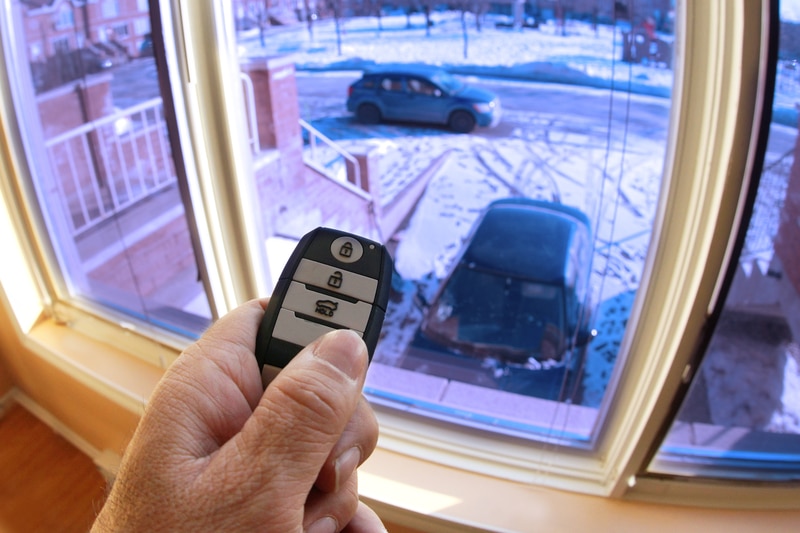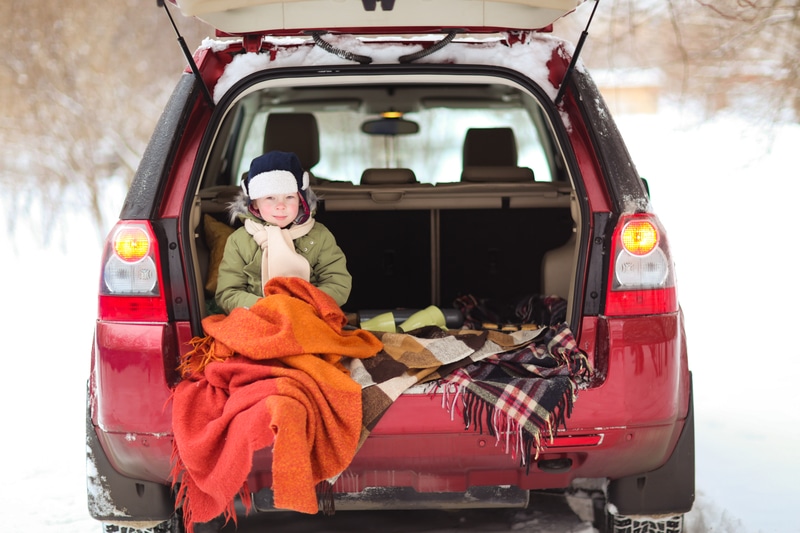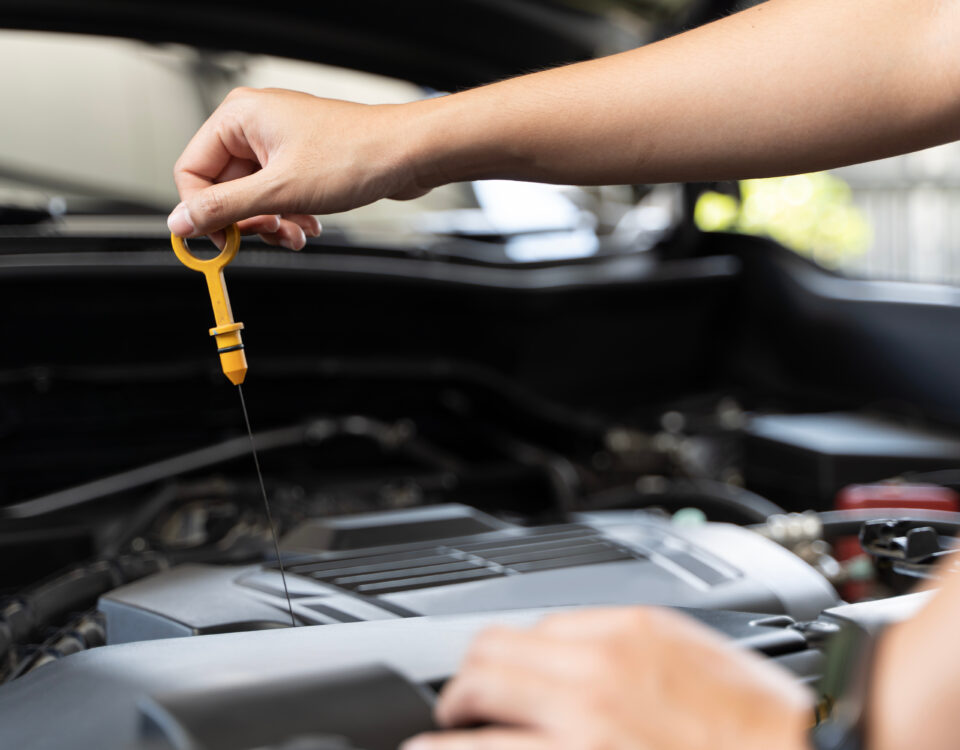14 Winter Essentials To Keep In Your Car
October 31, 2019National Teens Don’t Text and Drive Week
November 15, 2019As you buckle up for another snowy Colorado winter, consider whether your car is properly equipped to get you to your destination safely. Here are the top car features that make driving in the snow safer and more comfortable.
Winter Tires
Some may wonder if winter tires are actually necessary for your winter commute. The answer is yes! Snow tires help you maintain traction on the road in situations where regular tires wouldn’t. The tire treads are deeper and the grooves help move snow outward so you don’t skid.
There is a difference between all-season tires and winter tires, so be aware of this. When the temperature drops, your all-season tires can lose traction. That’s why winter tires are the way to go in frequently snowy areas. The tread patterns on winter tires are also specially designed to handle winter roads. A network of cuts crisscrosses the tread block, creating more edges for the tire to bite into snow and ice.
Always change all 4 tires (not just 2) to snow tires so they work the same. If you live in very heavy snow areas, you may need to keep snow chains in your truck for emergencies.
Four-Wheel Drive
Four-wheel drive is a traction-enhancing car feature that can help you in the snow. When buying a car, it will be all-wheel drive, four-wheel drive, or two-wheel drive, front-wheel drive, etc. It all depends on the vehicle. For example, front-wheel drive will place more weight in the front of your vehicle, which can help “pull” a car forward out of snow.
Other cars will be rear-wheel drives or have specific tires that get more weight to perform different actions. What you need to know with four-wheel drive is that you can switch between different modes of where you need weight placed for your tires. If you have to move forward, you can switch your car to place more emphasis on pulling. If you need to bust out of snow backward, switch your gears to place more power at the back. Four-wheel drive is great for having options for getting out of snow in a bind.
Anti-Lock Brakes
Double check to make sure your car has anti-lock brakes. If your car doesn’t have brakes that automatically lock in certain snowy conditions, pump the brakes when slowing down. You push down lightly on the break, pause, push down again, pause, and do this until the car comes to a complete stop.
However, anti-lock brakes can help increase your stopping control and stability when braking suddenly. This antilock brake system is located on each of your wheels. There is an electro-hydraulic braking circuit and sensors to detect your speed and if you’re slowing down. In instances where you have to brake suddenly, the anti-lock brakes will make your tires pulsate and pump for you when skidding starts or before you even realize your tires were skidding. It can decrease your likelihood of a crash, which is one of many great car features!
Additional Car Features to Consider
- Stability Control: If you see a triangle icon up on your dash that features a car on a curved road, your stability control feature is telling you that your car is skidding on snow or ice. When this happens, this control will automatically apply some brake pressure to steer your car through the skid.
- Remote Start: Don’t like the cold? Consider getting a remote start for your vehicle. From the comfort of your home, you can press a button and start your car 5-10 minutes early without going outside so that it’s heated up for you when you go to start your morning commute. This is great for icy days when your car is frozen and needs time to warm up before driving.
- Heated Seats: This car feature is generally a button found on the outside of your seat towards the door. Some will feature different levels of heat or different areas of your seat you can warm so you have a comfy ride.
- Added Ground Clearance: Your clearance is how high up your car is from the ground. It’s good to know for going over bumps, objects in the road or when you’re deciding if you’ll get stuck in snow or not. Some cars come with “added” ground clearance, meaning you can raise your car up higher.
Your Own Preparation
Remember, no feature is as important as your own preparation for driving in the snow. As an informed driver, you must be aware that snowy, icy conditions can be dangerous. Do what you can to prepare your car for the weather and yourself if you should get stuck. Invest in winter or all-terrain tires that can help your car from sliding in the snow. Keep a bag or two of salt or other ice-melting material in the trunk of your car in case you get stuck. Add a small snow shovel and chains for your car as well in your trunk kit in case you are in an area where people are scarce.
If you read our last article, having emergency kits is essential to being safe as a driver throughout the winter months. Keep emergency kits in your car, including a first-aid kit equipped with all the items you would need to bandage wounds in case of a car accident. Keep a food kit (for each member of the family) in your car that can keep you well-fed and hydrated for days. Have a third kit for tools that can help patch busted tires or can help with basic tweaks—such as a wrench to move frozen screws under the hood of your car. Pairing all the best car features out there along with your own preparation can help you be prepared for driving in the snow like a pro. For all our safety tips and additional car features we recommend for the winter, call Scott’s Fort Collins Auto today at (970) 682-4202!

